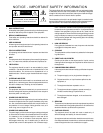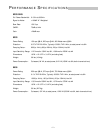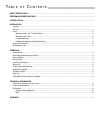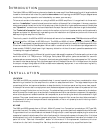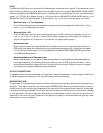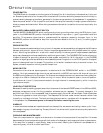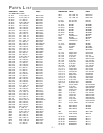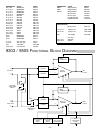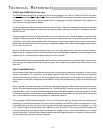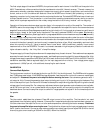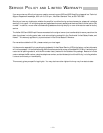
TECHNICAL REFERENCE
THEORY AND OPERATION OF trans•
nova
The (TRANSconductance NOdal Voltage Amplifier) principle is based on our 1984 U.S. Patent 4,467,288. This patent
describes the advantages of audio power amplifiers in which a MOSFET output stage is connected in a grounded source
configuration. In this connection the output stage has its full voltage gain of typically 20dB (ten times), instead of the
usual 1dB loss of voltage follower designs.
It is an inevitable result of electrical physics that this output with gain inherently increases the power gain (for the same
bandwidth) of the output stage by typically ten times over the conventional follower connection, using exactly the same
MOSFET devices.
The output stage is thus now ten times less wasteful of its incoming drive power. The driver stage can now be of a low
voltage (±24 volts) nature and be designed along the same principles always used in high quality preamplifiers: Class
A operation, high linearity, and wide bandwidth. A topology utilizing an output stage with gain yields a much simpler,
shorter total signal path than that of the usual high voltage driver designs. The number of serial stages is reduced from
five or more, to only three.
But all of the above does not make an amplifier trans•
nova
. The output stage is further refined into a trans-impedance
stage (current-to-voltage converter), to achieve extremely short loop (fast) negative feedback. The output stage is driven
cooperatively by a transconductance stage (voltage-to-current converter).
The 9303and 9505are the most sophisticated amplifiers we have yet developed utilizing the basic trans•
nova
principle.
And, although the measured specifications are very good, the numbers do not describe the realistic sound of the
amplifiers.
CIRCUIT IMPLEMENTATION
– 9 –
Earlier models of amplifiers we have offered using the trans•
nova
topology have earned the reputation for clean, natural
sounding reproduction. A conservative, purist design approach was used to avoid compromising the desirable
characteristics of the trans•
nova
circuits. Circuit innovation was not prevented by this conservatism; as is evident in the
discoveries which resulted in development of the DIABLO circuitry to be discussed shortly, and the novel balanced input
system.
Many “balanced” amplifiers are merely conventional unbalanced designs with a Balanced-to-Unbalanced converter
(usually IC op-amp based) preceding the power amplifier. The 9303 and 9505, however, are true differential input power
amplifiers. Each (+) and (–) input port has been buffered to allow direct signal access to the differential amplifier, without
conversion to unbalanced form. Deactivating the Balanced Mode is accomplished via a rear panel switch that grounds
the (–) inputs, effectively converting the amplifier to unbalanced operation.
The input stage is a JFET differential amplifier. This circuit configuration results in excellent front end headroom and
extremely low intermodulation effects. The ultra low noise characteristic of the JFETs virtually eliminates noise “mixing”
(intermodulation) with the music signal, reducing discordant product frequencies known as “noise grain” or “noise
fuzz.” A servo integrator has been employed to establish minimal DC offset. This circuit monitors the DC offset at the
output of the amplifier, and injects an equal but opposite DC voltage into the (+) port of the differential input, thereby
cancelling the offset. This method eliminates the need for a sonically degrading electrolytic capacitor in the audio path,
and provides superior subsonic frequency response.




